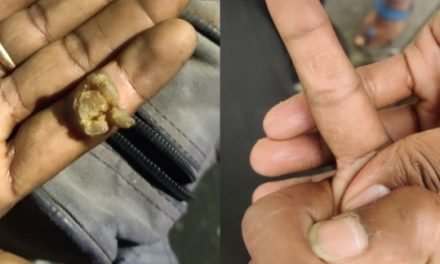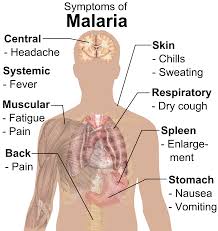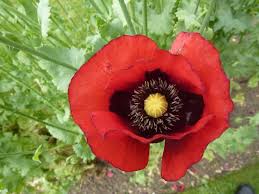By Dr. Alexander C. Hermance, Rochester, N.Y.
In speaking upon the subject of homoeopathic materia medica, the application of which, by the way, is coming to be considered as a specialty, as we now hear of the materia medicist, or the internist, in contra-distinction to the surgeon, pathologist, neurologist, gynecologist and other specialties, and considering the fact that so many of us in our endeavor to be considered scientific in practice are chasing the false gods, such as the serum therapy, etc., I would say, though at one time considering the knowledge of homoeopathic therapeutics possessed and practiced by all who professed to believe Homoeopathy, that in these days of therapeutic nihilism a man who studies and applies his knowledge of materia medica according to the law is indeed a specialist.
When we hear it said in medical meetings, “Of what use is it to read papers on a remedy? We can get all that in books. It is only a waste of valuable time. Let us talk about something scientific, the vaccine treatment, the Salvarsan treatment for syphilis. Let us discuss modern therapy and be up to date.” It is well to be up-to-date and we must consider and accept many truths developed by modern thought and investigation. But none of them have, as yet, disproved the homoeopathic truth of similars, but, on the contrary, confirmed it in many instances. Therefore, though it may be an old, old story, it is the truth. We are all familiar with the old saying, “there is more truth than poetry in that,” but perhaps we are not so familiar with its origin. The story goes that old John Sylvester and old Ben Johnson, the celebrated English wits, used to meet several nights a week at the tavern to smoke their pipes and drink their ale and see which could outdo the other in wit. One night it was to see who could compose the best impromptu rhyme. Says John Sylvester, “I, John Sylvester, slept with your sister,” and Johnson replied by saying, “but I, Ben Johnson, slept with your wife.” Ah! Says John, “but that’s not poetry.” “No, but by god it’s the truth,” said Johnson. Homoeopathic therapeutics may not be considered scientific by our Old School friends, but by God it’s the truth.
Some of this modern therapy reminds me of the old darkey preacher who was comparing the different religious sects. Using a chestnut as an illustration the old fellow being a Methodist wanted to show that the meat of the nut represented the truth. He, as follow, said: “Brethren, the prickly bur you see on the outside represents the stiff-necked Episcopalean, the shell undearneath, the hard shell Baptist, but the meat, ah! The meat on the inside that am the methodist.” Cracking the nut open with a look of disgust, he exclaimed: “the inside am rotten.” And so I believe it to be with many of the modern theories of cure “the inside am rotten.”
The laboratory can explain many things, but it cannot tell us a Lycopodium patient has an aggravation from 4 to 8 P.M., a Sulphur patient a diarrhoea at 5 A.M., an Arsenicum patient a midnight aggravation, a Borax patient an aggravation from downward motion, etc. Only the physiological study of the action of drugs upon the living subject will tell us these things.
We need all the papers and discussions upon materia medica that we can get, – good, practical papers, not too long, but to the point, bringing out characteristics, so to speak, with verification of same. We want to be able to recognize these old friends when we meet them and have to prescribe in a hurry. No finite mind can retain a complete knowledge of all the symptomatology of, I might say, our too numerous remedies, but it can retain the peculiar characteristics of many and in this way get as familiar with them as we do our friends whom we meet every day by their voice, their laugh, their gait, their expression, etc. This will greatly help us in quick snap-shot prescribing to select the simillimum instead of resorting to paliation unhomoeopathic and unscientific. In our most complicated cases we must have time to work them out systematically, using some good repertory.
In closing I might relate a few snap-shot cures or successful keynote prescribing. A woman at a hotel was suffering with severe attack of what has been termed uterine colic. She was obliged to stop over in the city on account of illness. Attacks had been coming on regularly for several years lasting all during menstruation. Had all kinds of doctors – operation advised by regular physician at home. Must leave city in morning, if possible, must have relief – audible rumbling of gas in intestines, marked aggravation 4 to 8 P.M. – hungry, but feared a mouthful of food would fill her up. You recognize an old friend, Lycopodium. Was cured in a few hours. A friend says she is perfectly well with no return of trouble.
A travelling man at a hotel, also with severe attack of asthma, afflicted many years, thinks it hereditary, must have relief so as to leave city in morning. Attack comes on at midnight – can-not lie down for fear of suffocating, extreme restlessness, fearfull of results. B. Arsenicum. Two years after, when passing through the city patient stopped to get some more of those powders in case he ever needed them. There has been no return up to date.
Little girl of five years of age has always disliked milk, which disagreed with her in any form. After taking Zethusa has had no further trouble. She now likes milk.
Young woman with enlarged cervical hands, after taking number of remedies, asked if salt would hurt her. When asked why, she replied that she had used it on everything, even clear at times. Nat. mur. 200 cured her.
You all recognize old friends in these cases, and I could relate like experiences. We must go to our repertory with our more difficult cases, but we must also memorize enough materia medica to be able to use it when time for study is limited instead of resorting to paliative measures of old school.
It is our materia medica and therapeutics that makes us distinctive in medicine, and the more we have of it the better it will be, not exhaustive articles that we could much better read and digest at leisure, but verification’s and comparisons, papers that bring out some distinctive feature of some remedy that may be impressed upon our mind. We then feel that we have learned something that will be useful to us perhaps in an emergency. I believe in an abbreviation rather than an expansion of the homoeopathic materia medica.
The original remedies proven by Hahnemann, Gross, Hering, and others number about two hundred, which of themselves compose a large materia medica, nearly all of which have stood the investigation of wise and careful practitioner for more than half a century.
It is really painful to acknowledge what drones many of us have been, for after a score of years in active practice we are far from being thorough in our knowledge of the most commonly used remedies, and many of us who have presumed to have mastered their therapeutic properties are ready to lay them aside to give place to newly proved drugs which are comparatively little known in practice. We should feel less anxious to increase our list of remedies, but should increase our knowledge of the old and well proven ones.




